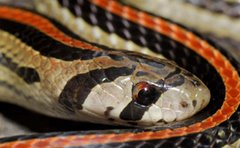"What happens to the snake when I call 999?"
I decided to write to the Singapore Police Force and the Singapore Zoo to find out the answer.
Relevant information from their replies are provided here:
"Generally, the police will respond to incident of snake when there is an immediate threat to life and property at public areas. For incident of snake found in private compound, the police will normally advise the complainant to call a pest control agency who can provide value-added services to discourage snakes presence. However, our officers will first assess the situation based on the degree of threat to life and property before they respond to incident of snake found in private compound. As it is impossible to identify all snakes, the officers are briefed on the common poisonous and non-poisonous snakes; python and cobra. All our officers have been briefed on how to use a snake catching device, and they are expected to handle any case of snake sighting when called upon. Every Police Division is equipped with the device and it is available for use to the officers. No special single Unit is tasked with catching snakes. All snakes are caught alive. Police hand over the live snakes to AVA or Zoo."
"Snakes that are brought in by the public or the police are usually released to the wild. The practice and appropriate release location would be done in close partnership with the National Parks Board. Also, for certain snakes, we would absorb them in our collection for display and breeding purposes."
In my opinion
I decided to write to the Singapore Police Force and the Singapore Zoo to find out the answer.
Relevant information from their replies are provided here:
POLICE
"Generally, the police will respond to incident of snake when there is an immediate threat to life and property at public areas. For incident of snake found in private compound, the police will normally advise the complainant to call a pest control agency who can provide value-added services to discourage snakes presence. However, our officers will first assess the situation based on the degree of threat to life and property before they respond to incident of snake found in private compound. As it is impossible to identify all snakes, the officers are briefed on the common poisonous and non-poisonous snakes; python and cobra. All our officers have been briefed on how to use a snake catching device, and they are expected to handle any case of snake sighting when called upon. Every Police Division is equipped with the device and it is available for use to the officers. No special single Unit is tasked with catching snakes. All snakes are caught alive. Police hand over the live snakes to AVA or Zoo."
ZOO
"Snakes that are brought in by the public or the police are usually released to the wild. The practice and appropriate release location would be done in close partnership with the National Parks Board. Also, for certain snakes, we would absorb them in our collection for display and breeding purposes."
In my opinion
Leave snakes alone if you see them in the wild. They will usually slither away without much hesitation. Call the police or the zoo only if the snakes are too close for your safety (e.g. trapped in your house). Otherwise, I feel that it is unnecessary to disturb the snakes and also the authorities.


















